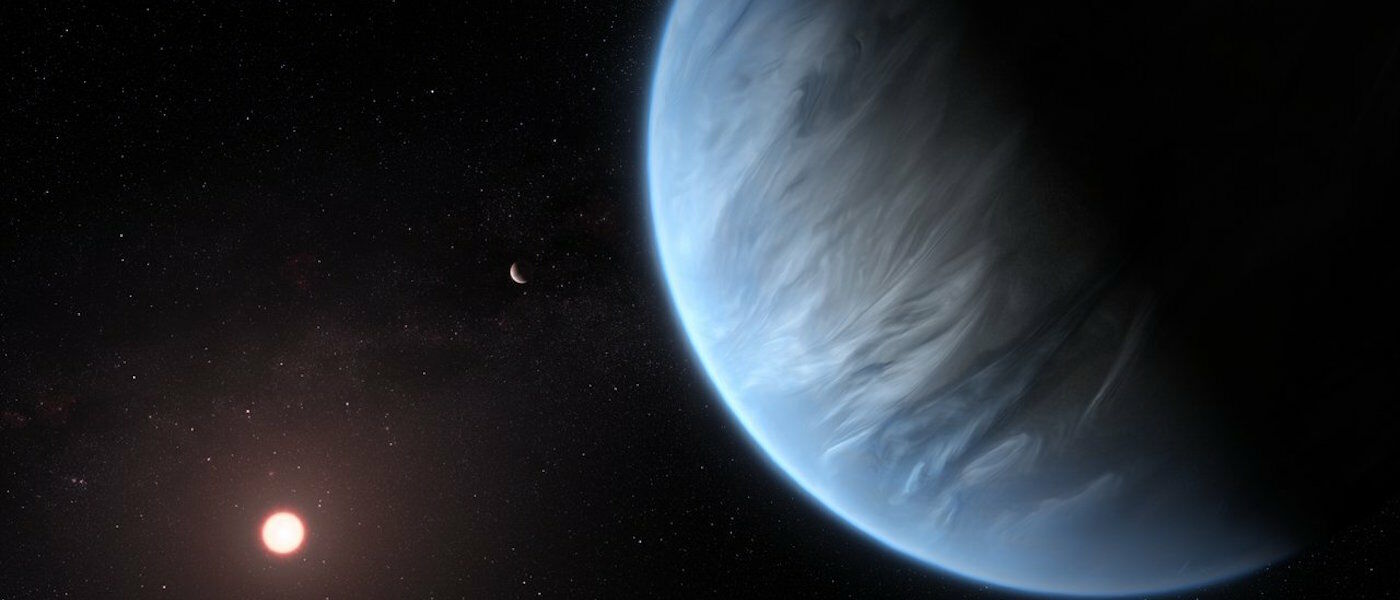Hubble Space Telescope spots water on exoplanet 110 light-years away
A red sun? Super strong gravity? Constant high UV radiation? These are all characteristics of the exoplanet K2-18b – unlike Earth in so many ways, except for one: liquid water!
That’s right! With data from the NASA/ESA Hubble Space Telescope, scientists detected water vapor in the atmosphere of this faraway planet located within a habitable zone (think: a planet the right size and distance in relation to its star to allow for liquid water).
This is a big deal, as K2-18b is now the only planet orbiting a star outside our solar system known to have both water and temperatures that could support life.
While K2-18b has liquid water, it is unsure whether there is actually life living on the surface. We can’t fly up to it easily, because K2-18b is 110 light-years away from Earth (about 660 trillion miles).
From the data collected, scientists have determined the planet is about twice as large as Earth and nine times more massive. This means there is a lot more gravity and pressure which would make it hard for us to not be crushed! Also, scientists aren’t sure whether there even is a surface, be it rock or water.
Despite these challenges, this discovery is certainly a breakthrough when it comes to answering the big questions, like “Is Earth unique?”
In the future, NASA’s James Webb Space Telescope will help scientists learn more by continuing to study this and other exoplanets after its scheduled launch in 2021.
Interested in more space stories like this? Catch a show in LSC’s Jennifer Chalsty Planetarium, the biggest planetarium in the Western Hemisphere! Our all-live show, “Wonders of the Night Sky,” always sets aside a portion for LSC Space News Now stories.
